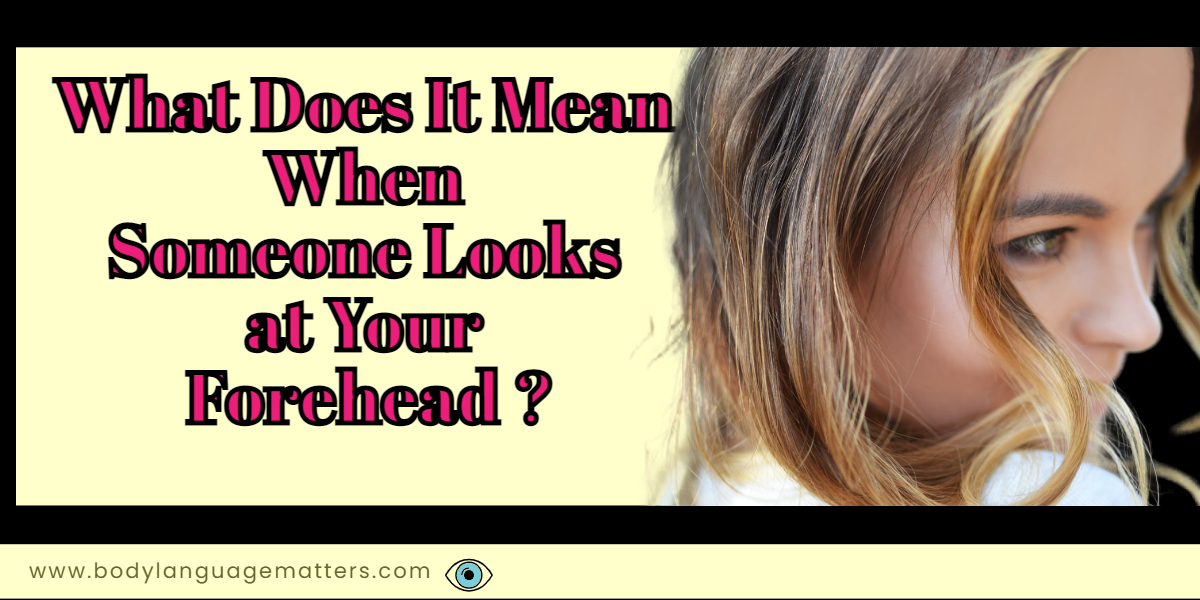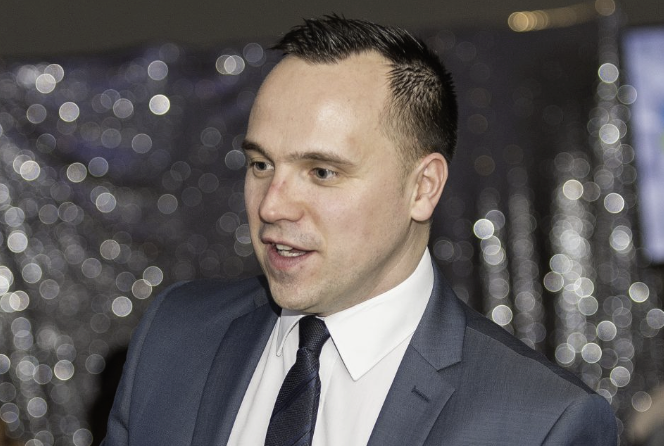It is really hard to say what someone means when they look at your forehead. There are a lot of different meanings but one thing is for sure you have noticed this and want to find out why. In this post, we will take a look at the most common meanings of looking at the forehead.
The main reason someone would look at your forehead is because they feel uncomfortable looking into your eyes. This is because they feel intimidated or scared to look at you directly.
There are many more interpretations of what it means when someone looks at your forehead. Some believe that it is a way of showing respect, while others believe that it is a way of sizing someone up or making a judgment. We believe most people will look at your forehead to figure out what you are expressing nonverbally as the forehead is one of the most expressive areas of the body.
The first thing you need to understand is the context around why this person is looking at your forehead this will give you clues and ideas to your situation.
Understand context First.
Context refers to the information that is relevant to a particular situation or topic. When we talk about context from a body language point of view we need to take into account where they are, time of day and people they are with. This will give you clear understanding of social situations and hierarchy around them.
Next we will take a deeper dive into why people look at the forehead in a conversation.
Why Do People Look At Your Forehead?
“The forehead is a very expressive area of the face. It can show a person’s feelings, level of concentration, and mental state.“
People are more likely to spend more time looking at someone’s forehead than any other part of the face. This is because it contains many important clues about a person’s emotions, thoughts, and intentions and is one of the largest places on the face.
You will need to take into account the context surrounding their forehead expression. Where they are, who they are with and what they are doing. When you understand the context this will give you and idea to what is really going on.
There are a few body language cues you should understand when it comes to reading the forehead.
Body Language Cues Of The Forehead.
When it comes to the forehead, there are many emotions we can learn from someone by observing their nonverbal cues.
Happiness.
When it comes to the emotion of happiness, it manifests in many different ways. When we see a very happy person, we can see the crinkling of lines above the eyes and across the forehead.
You won’t see everyday happiness or pleasant moods displayed on someone’s forehead.
Fear.
Fear is one of the most powerful emotions, with a plethora of physical manifestations.
Fear is a body language cue that is so similar to others that it could be interpreted as the same. That’s why understanding context first is really important.
Can you also see sweating, rapid breathing, and shallow breathing? Has their blink rate gone up? You need to take into account all the non-verbal tells. Fear has so many different meanings that it can be difficult to pinpoint what’s happening.
There is only one way to tell if someone is scared or showing fear, and that’s through microexpressions.
What is a microexpression?
Microexpressions are quick, involuntary facial expressions that last only a few tenths of seconds. These expressions can give away a person’s true emotions even when they are trying to hide them. Microexpressions can be used to provide clues into their thoughts and feelings, especially when someone is deceptive.
When you see someone flash their eye borrows and then crinkle lines above the eyes. It’s a shocking look that comes across the face.
Sadness.
Drawing together the eyebrows and the forehead towards the middle, above the eyebrows, is a signal of sadness and many other emotions as well. This can also be a microexpression and can flash across the face very quickly or it can be prolonged depending on what that person is really feeling or trying to hide.
Anger.
Anger is similar to sadness in that the eyes will pull together and make a frowning gesture. You can see this on people’s foreheads: it is either one line or two that are in between the eyes, just above the nose.
The way we express anger and sadness is strikingly similar. When people are angry, their eyes might close a little more and move closer together. This can be seen on a person’s forehead in one continuous line, or two lines that are between the eyes. These lines are vertical, when you look at people’s faces can you see this line eched into their skin
Frequently Asked Questions
Do people usually look at your forehead when they talk to you?
No, people do not usually look at your forehead when they talk to you. This can look strange so don’t do it. Take in the whole picture and become natural.
Do you think it means anything when someone looks at your forehead?
Generally speaking, people may look at someone’s forehead to gauge what is going on with them. The forehead is a part of the body that is visible and is the most reflective of how a person truly feels.
Do you think it’s rude if someone looks at your forehead when they talk to you?
There is no universal answer to this question as it can depend on the context and the relationship between the two people involved. However, in general, it may be considered rude if someone looks at your forehead when they talk to you, as it can be seen as a sign of disrespect or disinterest.
What do you think people are trying to communicate when they look at your forehead?
When people look at your forehead, they might be trying to figure out what you are thinking or feeling. If you have a furrowed brow, it could mean that you are concentrating on something or someone. They might also be attempting to decode your mood by reading your facial expression.
Final Thoughts
Why somone looks at your forehead can feel strange but the one thing for sure it they are trying to figure something out about you. It could mean that the person is trying to figure if you’re happy or said or maybe they have noticed someone on your forehead. Whatever the reason it always comes back to context first to understand why. To learn more about nonverbals cues of the head check out Body Language Head (Full Guide) we hope you have enjoyed reading this post until next time.

